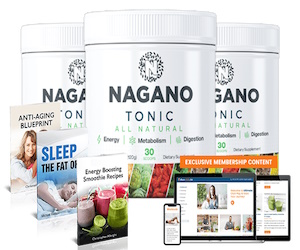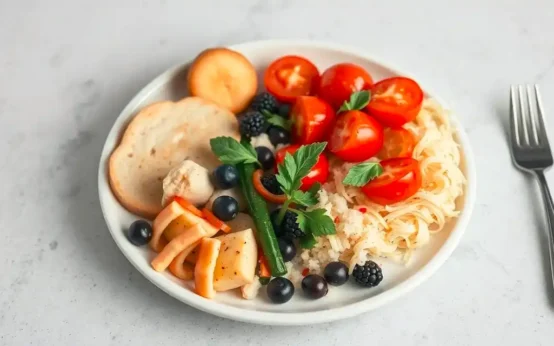Small choices add up faster than you think. One glass of water before coffee, a ten-minute walk, a set bedtime, and a weekly check-in can change how you feel next month. If you’ve been wondering what can you do to maintain a healthy lifestyle, this guide breaks it down into friendly, doable steps.
You’ll get a clear plan for food, movement, sleep, stress, and preventive care. No strict rules, just smart routines that fit real life. Pick one action per section, try it this week, and build from there. The goal is consistency, not perfection. Let’s start with tiny moves you can keep, then grow.
What can you do to maintain a healthy lifestyle? Start with simple daily habits
Big, extreme changes look exciting, then crash into busy schedules. Starting small works because you can repeat it on hard days. Routines beat motivation when life gets loud.
The goal is a routine that fits you, not a perfect plan. You’ll set small goals, stack them onto habits you already do, shape your environment so the healthy choice is easy, plan tomorrow tonight, and track wins in a simple way.
Here is how this looks in practice:
- Set one tiny goal for the week, like drink water with breakfast.
- Stack it to an existing habit, like pour water right after you start the coffee machine.
- Set up your space, like leaving a bottle on the counter.
- Plan your next day in five minutes each evening.
- Track progress with one quick mark on a calendar.
This builds a loop you can trust. You do not need to overthink it. You need to repeat it.
Quick example day:
- Morning, drink a full glass of water, do five minutes of stretching.
- Midday, take a brisk 10-minute walk after lunch.
- Afternoon, keep a water bottle at your desk, refill twice.
- Evening, eat a plate with protein, vegetables, and a starch, then a short walk.
- Night, screens off 45 minutes before bed, light read, lights out at the same time.
That is it. You did not overhaul your life. You made steady choices that build health.
Set small SMART goals you can keep
SMART means specific, measurable, achievable, relevant, time-bound. Plain and simple, pick one clear action you can check off, that fits your life, with a time frame.
Examples:
- Walk 10 minutes after dinner on Monday, Wednesday, and Friday for the next 2 weeks.
- Drink a 12-ounce glass of water with breakfast every day this week.
- Stretch for 5 minutes before bed, Sunday through Thursday, for the next 10 days.
- Add a piece of fruit to lunch, 5 days this week.
Start with one goal for 1 to 2 weeks. When it feels automatic, add another. Keep goals small enough that you can do them even on a busy day.
Use habit stacking and environment design
Tie a new habit to something you already do. Then make your space nudge you in the right direction.
Morning ideas:
- After brushing your teeth, do 10 bodyweight squats.
- While coffee brews, fill a water bottle.
- Lay out workout shoes next to your bed the night before.
Workday ideas:
- Place a water bottle on your desk, within arm’s reach.
- Keep fruit or nuts visible, put chips on a higher shelf.
- Take calls while standing or walking when possible.
Evening ideas:
- Put a yoga mat by the couch to stretch during a show.
- Set vitamins next to your toothbrush.
- Place your book on the pillow to cue wind-down reading.
Plan tomorrow tonight in 5 minutes
A quick evening check-in keeps the day from running you. Keep it light and flexible.
Do this:
- Confirm your target sleep time and wake time.
- Choose one movement block, like a 15-minute walk after lunch.
- Pick one balanced meal, like bean chili with a side salad.
- Set one top task for the day.
Write it on a sticky note or in a notes app. This works for students, parents, remote workers, and shift workers. If plans change, swap the movement block or meal, then move on.
Track and celebrate progress without stress
Tracking makes small wins visible. Keep it simple.
Try one:
- Put a checkmark on a wall calendar for each day you complete your habit.
- Use a basic habit app with one or two habits.
- Write a single sentence in a weekly journal line, like “Walked 10 minutes after dinner Tues and Thurs.”
Celebrate consistency. Give yourself a high-five, a favorite playlist, or a fresh sticker on the calendar. Do a 5-minute weekly review. Ask, what worked, what felt hard, what is one tweak for next week. Skip calorie counting or complex spreadsheets unless you enjoy them.
Eat for energy and long-term health
You do not need a strict diet to feel better. A balanced plate most of the time will cover your bases and leave room for favorite foods. Think of food as fuel for steady energy, clear focus, and a stable mood.
Use the plate method to build meals without math. Aim for protein and fiber to keep you full. Cut back on added sugar and ultra-processed snacks most days, not all days. Prep a couple of basics each week so meals come together fast. Drink water first.
These choices help your body stay steady. Over time you will notice fewer crashes, better digestion, and less stress around food.
Use the plate method at most meals
The plate method keeps meals balanced:
- Half the plate vegetables or fruit.
- One quarter protein.
- One quarter whole grains or starchy foods.
- Add a small amount of healthy fat, like olive oil, avocado, or nuts.
Sample plates:
- Grilled chicken, brown rice, and steamed broccoli with olive oil.
- Bean chili with mixed veggies, side salad, and a small handful of tortilla chips.
- Eggs, whole grain toast with avocado, and a side of berries.
Protein and fiber help you stay full
Protein options:
- Eggs, Greek yogurt, cottage cheese.
- Beans and lentils, tofu, tempeh.
- Chicken, turkey, fish, lean beef.
Fiber-rich choices:
- Oats, barley, quinoa, whole grain bread or pasta.
- Lentils, chickpeas, black beans.
- Apples, berries, pears.
- Leafy greens, broccoli, carrots.
Mix protein and fiber at meals and snacks, like yogurt with berries, apple with peanut butter, or hummus with carrots and whole grain crackers. This steadies energy and helps cut cravings.
Cut back on added sugar and ultra-processed snacks
Small changes make a big difference. Read labels and scan for words like sugar, syrup, honey, or anything ending in “-ose.”
Easy swaps:
- Sparkling water or water with lemon instead of soda.
- Fruit and nuts instead of candy.
- Plain yogurt with fruit and a drizzle of honey instead of sweetened cups.
- Whole grain toast with avocado instead of pastries most mornings.
Keep the tone kind with yourself. Enjoy sweets on occasion, keep most days simple and balanced.
Meal prep and grocery tips on a budget
Save time and money with a short plan:
- Choose 3 dinners for the week, write a list, shop once.
- Cook once, eat twice, like doubling a soup or chili.
- Use frozen veggies and fruit, they are nutritious and often cheaper.
- Buy store brands for basics like oats, rice, beans, and spices.
- Roast a sheet pan of protein and veggies, then mix with rice or salad all week.
Quick batch-cook idea:
- Sheet pan meal, toss chicken thighs or chickpeas with chopped sweet potatoes and broccoli, olive oil, salt, pepper, and paprika. Roast at 425°F for 25 to 35 minutes. Eat half now, save half for two more meals.
Hydrate smarter throughout the day
Make water your default. Start the day with a glass, then drink water first at meals.
Simple tactics:
- Carry a refillable bottle and aim for pale yellow urine.
- Add lemon, mint, cucumber, or berries for flavor.
- Keep caffeine earlier in the day, and go lighter after lunch.
- Limit sugary drinks to an occasional treat.
Move your body most days for strength, heart health, and mood
Movement should feel welcoming. Pick activities you enjoy, then add a bit of structure so you improve over time. Think of four parts: cardio, strength, flexibility and mobility, and less sitting.
You can move at home, outdoors, or in a gym. Bodyweight is enough to start. Good form and slow progress beat collapse-and-restart cycles.
Aim for most days of activity. Mix short walks with two or three strength sessions and a few minutes of stretching.
Cardio you enjoy for a healthy heart
Choose activities you like:
- Brisk walking, cycling, swimming, dancing, hiking, or rowing.
A simple target is 150 minutes of moderate activity per week. You can also do 75 minutes of vigorous activity if you prefer. Break it up into 20 to 30 minute sessions.
Beginner interval idea:
- After a 5-minute warm-up walk, go 1 minute faster, 2 minutes easy.
- Repeat 6 to 8 times, cool down for 5 minutes.
- Do this 2 to 3 times per week.
Strength training 2 to 3 times per week
Strength work builds muscle, supports joints, and helps metabolism. Start with bodyweight, bands, or light dumbbells.
Cover these patterns:
- Push, push-ups on a counter or wall.
- Pull, rows with bands or dumbbells.
- Squat, bodyweight squats or sit-to-stand from a chair.
- Hinge, hip hinge or light deadlift with a backpack.
- Core, planks or dead bugs.
Do 2 to 3 sets of 8 to 12 reps per move, rest between sets, and focus on form. Add a little weight or an extra rep each week. Take at least one rest day between strength sessions.
Flexibility and mobility for joints and posture
Keep it short and regular, 5 to 10 minutes after a walk or workout.
Areas to hit:
- Neck rolls and gentle chin tucks.
- Hip flexor stretch and figure-four stretch.
- Calf stretch on a wall.
- Hamstring stretch while seated or standing.
- Chest opener with hands behind your back or on a doorway.
Gentle yoga or simple stretches work well. Move in pain-free ranges and breathe steadily.
Sit less with movement breaks at work and home
Short bursts add up over a day. Long sitting can make your back and hips tight and your energy dip.
Try this:
- Set a timer every 30 to 60 minutes.
- Stand up, do a quick loop around the room, stretch your chest and hips.
- Do 10 air squats or calf raises.
- Take calls while standing or walking when you can.
- Park a bit farther away when safe, or get off one stop early.
Sleep, stress, and preventive care to stay balanced
Recovery and mental health make every other habit easier. Good sleep sets your rhythm. Stress tools help you respond instead of react. Social connection boosts mood. Preventive care catches small issues before they grow.
These are quiet habits with big payoffs. Put them on the same level as food and movement.
Build healthy sleep habits
Most adults do best with 7 to 9 hours. Keep a steady sleep and wake time, even on weekends.
Better nights:
- Keep your room cool, dark, and quiet.
- Dim lights after dinner.
- Shut down screens 30 to 60 minutes before bed.
- Try a gentle wind-down, light stretching, reading, or a warm shower.
If sleep is tough, start small. Protect your wind-down window and keep wake time steady.
Simple stress tools you can do anywhere
Stress shows up, then passes. Quick tools help your body reset.
Try 2 or 3:
- 4-4-6 breathing, inhale 4, hold 4, exhale 6, repeat for 2 minutes.
- Two-minute body scan, notice feet to head, release tension.
- Short walk outside, even 5 minutes helps.
- Journal for five minutes, or write three small gratitude notes.
Use them during the day when stress rises, and at night to settle down.
Social connection and mental health matter
We all need people. Check in with friends or family on a regular basis. Join a group, class, or club that fits your interests. Spend some time in nature when you can.
Reach out to a counselor or helpline if you feel stuck, heavy, or unsafe. Cutting back on alcohol and nicotine supports mood and sleep. Even a small reduction helps.
Preventive care and checkups keep you on track
Schedule routine care:
- See your primary care doctor, dentist, and eye doctor as advised.
- Stay current on vaccines and screenings based on age and risk.
- Keep a simple list of meds, supplements, and questions for each visit.
Listen to your body. Seek care early when something feels off. Quick action now often saves time and stress later.
Conclusion
The practical answer to what can you do to maintain a healthy lifestyle is simple, build small daily habits around food, movement, sleep, stress, and checkups. Start tiny, stack habits, shape your space, plan tomorrow in five minutes, and track wins without stress.
Pick one action from each section and try it for the next week. Keep what works, adjust what does not, and add the next small step. Progress beats perfection. Your health grows one simple choice at a time.
Related post:
What Can You Do to Maintain a Healthy Lifestyle: FAQ
How much exercise do I actually need each week?
Aim for 150 minutes of moderate activity, or 75 minutes of vigorous activity. Add strength training for all major muscle groups at least twice a week. Include balance work if you’re over 65, or if you feel unsteady. Short sessions count, so break it up if needed.
What’s a realistic way to start eating healthier?
Fill half your plate with vegetables and fruit, one quarter with lean protein, and one quarter with whole grains. Cook more at home, use less added sugar, and choose olive oil over butter most days. Shop the perimeter of the store, and keep healthy snacks ready.
How much sleep do adults need?
Most adults need 7 to 9 hours each night. Keep a steady sleep schedule, even on weekends. Make your room dark, cool, and quiet. Limit screens and heavy meals for two hours before bed.
What’s the best diet for long-term health?
There isn’t one perfect diet. Patterns like Mediterranean or DASH work well because they focus on vegetables, fruit, beans, whole grains, fish, nuts, and olive oil. Limit ultra-processed foods, refined grains, and added sugars. Pick a plan you can stick with for years.
How much water should I drink?
Use thirst and urine color as guides. Pale yellow urine usually means you’re well hydrated. Many people do well with 11 to 15 cups per day from drinks and foods. Drink more with heat, exercise, or if you’re pregnant or breastfeeding.
What’s a healthy target for weight loss?
A steady 0.5 to 2 pounds per week is safe. Create a daily calorie gap of about 300 to 500 calories with diet and activity. Keep protein high and fiber rich foods on your plate to manage hunger. Track habits, not just the scale.
Which nutrients should I focus on?
Prioritize protein, fiber, and healthy fats. Most adults need 0.6 to 0.8 grams of protein per pound of body weight per day if active, less if sedentary. Aim for 25 to 38 grams of fiber. Get fats from olive oil, nuts, seeds, and fish.
Are supplements necessary?
Food first. A basic multivitamin can fill small gaps, not a poor diet. Vitamin D is common to supplement, especially with limited sun. Vegans often need B12, and some people need iron or iodine based on labs and diet.
How can I cut added sugar without feeling deprived?
Start with drinks. Swap soda for water or unsweetened tea. Choose plain yogurt and add fruit. Read labels, pick items with less than 6 grams of added sugar per serving when you can.
What’s a smart way to manage stress day to day?
Use short, repeatable practices. Try 5 minutes of slow breathing, a brisk walk, or a brief stretch break. Set boundaries for work messages after hours if you can. Protect sleep, it’s your base layer for stress control.
I sit all day. What can I do to offset it?
Stand up every 30 minutes for 2 to 3 minutes. Walk during calls, use the stairs, and park farther away. Add at least two strength sessions per week. A daily 20 to 30 minute walk makes a real difference.
How often should I get health screenings?
Check blood pressure at least yearly, more often if it runs high. Get fasting lipids every 4 to 6 years, sooner with risk factors. Screen for colorectal cancer starting at age 45. Follow guidance for mammograms and Pap tests based on your age and history.
Is alcohol okay if I’m trying to be healthy?
If you drink, keep it light. Up to one drink per day for women, two for men, is the upper limit, not a target. Fewer days per week and fewer drinks per day is better. Some people should not drink at all.
What’s the simplest way to read a nutrition label?
Scan serving size first. Check protein, fiber, and added sugars. Keep sodium under 2,300 milligrams per day, lower if advised. Short ingredient lists with whole foods are a good sign.
How can I stay on track when I’m busy or traveling?
Pack protein snacks like nuts, jerky, or yogurt. Choose grilled over fried, and ask for dressings on the side. Keep movement in your day, even if it’s 10 minute walks. Plan one anchor habit, like a morning stretch or water on waking.
How do I build habits that actually stick?
Start tiny and tie the habit to a trigger, like after coffee or after lunch. Make it easy, visible, and satisfying. Track your streak and celebrate small wins. When you slip, restart the next day without judgment.
What should I eat for better gut health?
Aim for 25 to 38 grams of fiber from beans, lentils, whole grains, vegetables, fruit, nuts, and seeds. Add fermented foods like yogurt, kefir, sauerkraut, or kimchi if tolerated. Drink enough water and move daily. Limit ultra-processed foods and excess alcohol.
How much protein do I need if I’m active?
Most active adults do well with 0.6 to 0.9 grams per pound of body weight per day, spread over meals. Older adults may benefit from the higher end to support muscle. Include a protein source at each meal and snack.
What are easy ways to add more movement without the gym?
Walk after meals, carry groceries, and take the stairs. Do bodyweight moves at home, like squats, pushups, and planks. Stretch or do mobility work while watching TV. Set calendar reminders to get up and move.
Any quick wins I can start today?
Drink a glass of water with each meal. Add one vegetable to lunch and dinner. Go to bed 30 minutes earlier. Take a 10 minute walk right after you finish eating.




 Importance of Hydration for Your Brain, Body, and Everyday Energy
Importance of Hydration for Your Brain, Body, and Everyday Energy  Healthiest Breakfast Cereal for Children
Healthiest Breakfast Cereal for Children  Anxiety Management Techniques
Anxiety Management Techniques  What Makes Fat in Our Body?
What Makes Fat in Our Body?  Best Diet to Reduce Risk of Diabetes
Best Diet to Reduce Risk of Diabetes  Long Term Effects from Botox
Long Term Effects from Botox